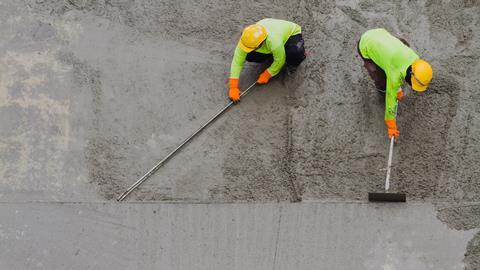When it comes to building materials, concrete towers above all others. It is the most used building material, and it is almost impossible to find a construction where at least one part is not made with concrete. This is due to the many advantages of the material. In this article, we look at the pros and cons of the most used building material in the world.
Pros of Concrete
High Durability: A major reason for the widespread use of concrete is its durability. The material is highly durable and capable of withstanding pressures and forces that would destroy other building materials. With technological developments, stronger concrete materials such as ultra-high-performance concrete are being made to further strengthen what is already one of the world’s strongest materials. Wherever it is used, whether for bridges, flooring, or walls, the material can carry heavy loads and remain resilient to environmental conditions.
Lifespan: Concrete can last as much as a hundred years and even more in the harshest conditions. All it requires is that the right aggregates, reinforcement, and measurement are used based on the purpose. Its ability to withstand most physical and environmental pressure means it’s not prone to quick damage. So whatever you use concrete for, you can count on it to outlast any other material.
Maintenance: Concrete in any situation except for pools is low maintenance. Most times, all you have to do is clean it once a while and, in some cases, seal it once in a few years, and you’re good to go.
Cost-effectiveness: Apart from the fact that it is affordable, The durability and low maintenance of the material means cost-efficient. You will not only save costs on the installation, which is usually lower than some building materials like wood, but you will also save costs because you won’t spend much on maintenance, and there is no need to replace the structure for a long time.
Design Options: Concrete stands out for its versatility in design options. While the original material is merely dull grey, it can be finished in so many ways that this dull grey doesn’t seem to matter much in the end. Of course, some people like the original color of concrete. But for those who don’t, there are so many design options to choose from and create the space you want.
Cons of Concrete
Hard: The strength of concrete is not always an advantage. This is most true when concrete is used for floors or swimming pools. In such instances, it can be very hard against the feet and not give the cushion that is sometimes needed.
Moisture: Concrete is naturally a porous material, which means water can penetrate it. There are instances where this is an advantage, and some concrete is specifically designed for that purpose. However, the opposite is the case most times. Keeping moisture out of your concrete will usually require sealants and finishers. You have to seal it often to prevent moisture, causing mold growth and even damage its structural integrity.
Cracks: Concrete may crack under heavy load, especially if the right reinforcements are not used, or the load is heavier. Repairing such cracks might be difficult, especially when it is structural.
Conclusion
Concrete as a building material has come to stay and is a favorite of masonry workers everywhere. While it has many other disadvantages, its relative advantage compared with other materials makes it a great choice.

